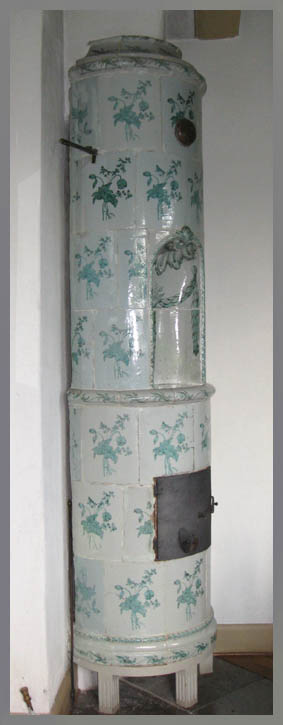Mariebergs Porslinsfabrik was located in Marieberg on Kungsholmen in Stockholm. It is said that for many, many years you could pick porcelain shards out of the ground there that reminded you of the old factory. Mariebergs Porslinsfabrik was started in 1758 and had upwards of 250 employees. Despite its greatness, however, it would only operate for nearly 30 years.
One of the earliest owners was a dentist, which may sound a little strange. But in the 18th century, exclusive porcelain false teeth were actually manufactured for those who could afford it. There were certainly no further false teeth to eat with, but it was supposed to look a bit fancy in the mouth anyway! But it was fine tableware that would become Marieberg's main production. Marieberg was considered the most skilled in our country at the time, eventually closely followed by Rörstrand.
In 1767, Johan Liljencrantz, Minister of Finance in Gustav the III's government, became the owner of Marieberg's Porslinsfabrik, and it was thanks to him that Marieberg took the step into tile stove manufacturing. Johan liljencrantz was a wealthy man who at this time built himself an incredibly lavish little castle just south of Stockholm: Sturehof Castle. And when it came time to equip the castle with suitable fireplaces, he naturally chose to have Marieberg manufacture the 20 tile stoves that were needed.

fThis beautiful "Mariebergaren" stands outside in one of the wing buildings in Sturehof Castle, where today there is a nice cafe.
Marieberg had not manufactured tile stoves before when they received the large order to make all the tile stoves for Sturehof Castle, but they proceeded in the same way as when they manufactured porcelain tableware. The tile stoves never became a large part of Marieberg's production. They were complicated to manufacture and thus became terribly expensive. The fact is that converted to today's money value, each tile stove cost in the order of 200,000-400,000 kroner!!! This meant that a tiled stove from Marieberg was nothing for ordinary people to even think about. The fact was that the only people who could afford it were those who had ownership interests in Marieberg's tile kiln factory.
For a long time it was believed that only about thirty tile stoves were manufactured at Marieberg, but very recent findings from a researcher (see below) point to Marieberg actually producing at least about ninety stoves over a period of twenty years.
Despite his first-class work, it was difficult to get finance in the porcelain factory and Liljencrantz eventually got tired and in 1782 he sold Marieberg to Rörstrand. In 1788 the factory burned to the ground.
Of the few Mariebergs tile stoves that are known today, there are as many as 20 at Sturehof Castle, which means that Sturehof has the incomparably largest collection of Mariebergs stoves in the world. The remaining ovens are scattered in Sweden and also some in Finland. Among other things, there is one in Hässelbyholm, where it was bought by Johan Liljencrantz's brother. Another of them stands Ulriksdals Slott. And in fact, a Mariebergs tile stove was discovered at Stockholm Palace about 15 years ago. However, it was packed in boxes and there is doubt as to whether it was ever assembled. But now it has finally been given the place of honor it deserves and adorns its place in Queen Silvia's office.
What distinguishes Marieberg's tile stoves are three things:

- The white color. True white color was very difficult to achieve. All factories pursued it, but none managed it as well as Marieberg. This is due to using yellow clay instead of the more common red clay that most local tile kiln makers were referred to.
-
The shiny glaze.
f One of Marieberg's specialties was faience. It is a technique where you put the decor under the glaze, as opposed to the more common technique of putting the decor on top of the glaze. The earthenware takes on a slightly flowing appearance where the decor "bleeds".
In the past, not much was known about tile stove production at Marieberg, and these first-class tile stoves have become a bit of a myth. Over the years, many have wanted to claim that they are the owner of a genuine "Mariebergare"!
But in May 2007, Susanna Scherman defended her thesis with a thesis specifically about Marieberg and 18th-century tile stoves. It is
nice that the thesis has now also resulted in a completely newly published book, a real masterpiece about tile stoves, which provides many answers to the questions that existed about the old Mariebergs and tile stoves in general from this time. Read more about the book here!
See more examples of the beautiful Marieberg tile stoves here.
Mariebergs Porslinsfabrik's history is strongly intertwined with Johan Liljencrantz and Sturehof Castle. Read more about the fantastic tile stove collection at Sturehof here.
